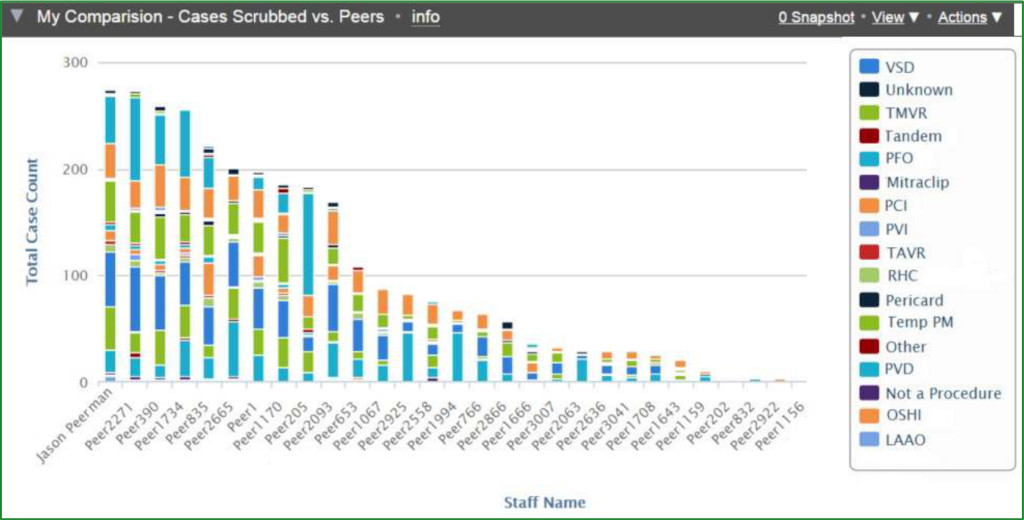Executive leadership has long realized the importance of engaging physicians to help clinical and operational initiatives succeed. Yet, only a few have implemented engagement plans, let alone reviewed their metrics to gain deeper insights into performance. And this is the gap: without meaningful analytical insights, it’s difficult to understand what’s influencing productivity levels.
Meanwhile, physicians need insights to understand how they’re performing individually or comparatively against their peers. They’re known for being highly trained, knowledgeable, and fiercely competitive professionals; so, they need meaningful information to fuel their productivity. Physicians who are empowered to understand performance are enabled to make improvements that benefit themselves, staff, patients, and the business.
Filling the Gap
With the right business solution, executive leadership and physicians have a common source of information from which they can make decisions about productivity. The best tools are easy-to-access, provide insights in (near) real-time, and empower staff from across the organization to take action. They provide tangible benchmarks and goals that all team members can strive towards. Most importantly, they unify data sources with a common source of truth — conversations can move beyond debating who has “the right data” so that higher-level decisions can be made about the business. Mutual trust is improved and alignment is strengthened.

compared to their aggregated peer group. The physician is informed that their average dose per case is below that of the average dose per case for the aggregated group. Similar measure sets can be provided for inter-quartile ranges.
Improving Productivity
Enabling physicians to measure clinical and operational performance gives them the ability to act on outliers. Some illustrative examples include complication rates, delays, LOS/readmits, risk mitigation, high-cost/high-revenue patients and referrers, and patient compliance. Financial metrics completes the picture for physicians, so they can maintain high performance standards. De-identified peer comparisons can also positively influence the productivity of physicians and staff.
Furthermore, having a common source of truth benefits the annual performance review process. When the same analytical insights are referenced throughout the year, there is little debate around the validity of information. Instead, the focus is on factual performance data, leading to more productive conversations between executive leadership and physicians. In short, the availability of this performance data has built trust over time, leading to conversations that are contextual in nature.

Benefits of Combined Data
In the very best scenario, a business operations platform is utilized to combine real-time and historical data: clinical, operational, and financial. This drives value for executive leadership in their engagement planning efforts, and physicians have actionable insights to positively improve performance. Both, along with other staff, are more informed in their respective areas of decision-making. Across the organization, team members are reviewing performance in their business language, focusing on actionable insights, and improving the overall business.
HealthLevel is the creator of Foundations™, a radiology business operations platform. By combining financial, clinical, and operational data, it uses analytics to paint a complete picture of a business’s operations. It engages every team member to confidently take actions that improve productivity and increase the bottom line. Learn more.
Want to Learn More? Contact Us.



Recent Comments